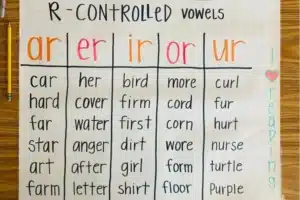
Inclusive Education for Disabled refers to a school environment where all children learn together, alongside each other, regardless of ability; Inclusive Education for Disabled kids means working to ensure all students can access their education by providing special resources, or learning tools, the use of different methods of teaching, or extra help while in a classroom. With Inclusive Education for Disabled, it is not enough to simply be in the same classroom together; inclusive education means addressing the barriers in education to ensure fair, respectful, and meaningful learning for all students.
Principles of Inclusive Education
Inclusive Education is the practice of ensuring that all children, regardless of ability or background, study together in inclusive and supportive atmospheres based on the needs of the child. In inclusive education, all students have equal opportunities for access, participation, and positive conditions of learning.
To download the brochure of the LD Course, Click Here!
For more details on the LD Course, Call/WhatsApp at +919321024137 / +919869866277
Key Principles are:
Inclusion
The basic right of education should be exercised by as many students, and they should be a part of a regular classroom without being confined to a secluded space.
Diversity
When each child displays their uniqueness and is appreciated for their qualities, the child’s self-esteem gets a huge boost, helping promote a spirit of positivity in the regular classroom.
Equality and Equity
Equality gives the same access to learning for every student. Equity ensures that the students get the desired support depending on their needs.
Participation
When students are encouraged to engage and participate fully in regular classroom activities, it helps them become self-confident and feel like a part of the classroom.
Accessibility
Learning environments, whether physical or technological, should be designed in such a manner that they can be easily accessed by all students.
Positive Attitudes
Teachers and peers must exhibit positive attitudes towards their fellow classroom helps to promote their overall emotional wellbeing.
Need-Based Education
The child’s learning preferences should be given top priority, and teaching methods and materials to be used as per the child’s strengths.
Implementing the above principles helps to create a safe and secure learning space that promotes each child’s well-being, helping them feel valued and supported.
To download the brochure of the LD Course, Click Here!
For more details on the LD Course, Call/WhatsApp at +919321024137 / +919869866277

Benefits of Disability Inclusive Education
Disability-inclusive education focuses on teaching students with disabilities alongside their peers in a way that benefits not only the students with special needs but also their classmates and teachers by developing a learning atmosphere that is more respectful and supportive.
Included in the educational benefits are the following educational benefits:
- Celebrating Everyone’s unique attributes: When each child is appreciated and recognised for their special traits, it helps to promote fairness and a spirit of unity amongst all children.
- Confidence Boost: Children with disabilities are more accepted and confident in their customary learning environment.
- Enhanced social interaction: When children with varied learning needs gain education alongside their classmates, it helps to promote positive interactions with children understanding each other’s strengths, building open lines of communication, and strong bonds of friendship.
- Academic Progress: Using tailored teaching methods, an adapted curriculum helps to enhance the learning process, ensuring effective achievement of better academic outcomes.
- Better Classroom Management: Inclusive classrooms promote structure, cooperation, and mutual respect, improving behavior and focus.
- Positive Learning Beliefs: This approach reinforces the idea that all students can learn and thrive when given equal opportunities and tailored support.
Disability inclusive education helps to lay down a strong foundation for a stable academic system that does justice to each child’s learning needs, giving each one a fair chance to secure a flourishing future.
To download the brochure of the LD Course, Click Here!
For more details on the LD Course, Call/WhatsApp at +919321024137 / +919869866277

National Policies for Inclusive Education
With NEP 2020 being slowly implemented into the educational system of the Indian academic scenario, several national policies have been initiated that help to apply the fundamentals of inclusive education to the regular classroom, ensuring that children with special needs are entitled to an equal share of educational opportunities that helps to foster diversity, equity, and respect in the classroom.
Main policies are listed below:
National Education Policy (NEP) 2020
The NEP 2020 has been designed to transform India’s academic scenario to a more holistic and multidisciplinary format, providing a wider choice of learning for all children. Special provisions have been made to uplift the overall progress of all children, including children with special needs, eradicating barriers and improving the infrastructure for better participation.
Right to Education (RTE) Act, 2009
The RTE Act is a law that highlights the importance of education for children, especially basic education, in the age group of 6 to 14. According to the ACT, free and compulsory education has to be an easily exercisable rule for all. This Right has special provisions made for supporting children with special needs.
Project Integrated Education for the Disabled (PIED)
It was understood that unless the educational system, especially the educators, were trained to handle diverse classrooms, there was a large percentage of children who would drop out of school, especially in the primary schools. So, this program was initiated by NCERT, focusing on training teachers and formulating teaching materials as per the child’s needs.
Rights of Persons with Disabilities (RPwD) Act, 2016
This act was specially devised to empower persons with disabilities. It aims to lay down principles that ensure that persons with disabilities have full rights to participate in Society. It aims to make the infrastructure strong enough to accommodate the needs of persons with disabilities and endeavours to eradicate judgmental and faulty societal attitudes.
These policies have been initiated with a strong intent to upgrade the education system and make it more flexible and adaptable for all students.
Adapting and Modifying the National Curriculum
Helping each child get a fair chance at education is a national commitment. When maximum participation by children is achieved, it helps to uplift the overall educational standards of any nation. This is possible only when every child’s learning needs are given due weightage and, accordingly, teaching methods are formulated, aligning with the child’s learning preferences.
Creating a conducive learning atmosphere needs adapting and modifying the syllabus that help children understand topics well and enable every child to get equal opportunities to succeed.
Adapting and modifying the curriculum helps students to be more engaged and involved in the learning process, ensuring maximum participation.
Types of Adaptations
- Content Adjustments: Simplifying or restructuring material to suit individual learning levels.
- Time Modifications: Allowing extended time to complete tasks or tests.
- Support Variations: Providing learning aids, peer support, or teacher assistance.
- Output Modifications: Offering alternative ways for students to demonstrate learning.
- Participation Changes: Adjusting how students engage in group activities.
- Goal Modifications: Redefining objectives to align with a student’s capabilities.
Examples of Curriculum Adaptations
- Customised instructions: Make the desired changes in the type of instructions given to children and alter teaching methods that are aligned with the child’s needs.
- Parallel or Alternative Curriculum: Developing learning paths for the students to successfully pursue their individual goals and learning paths.
- Assistive Technology: Tools, devices, or computers that can help make opportunities for students to potentially increase accessibility and participation.
Benefits of Adaptations
- Greater Access and Participation
- Improved Learning Outcomes
- Better involvement of children.
Making the appropriate changes in the curriculum guarantees equal opportunities for quality education made accessible for all learners, giving each child a fair chance for a bright future.
To download the brochure of the LD Course, Click Here!
For more details on the LD Course, Call/WhatsApp at +919321024137 / +919869866277

Source: pranavinternationalschool
Teacher Training for Inclusive Education
Inclusive education relies on the skilful actions of teachers who can meet the diverse needs of all of their students, including students with disabilities. Teacher preparation that emphasizes the knowledge, skills, and dispositions of teachers in supporting inclusive classrooms is essential. Specialized teacher preparation programs would be among the most effective ways to prepare teachers, such as a Learning Disability Course.
Key Aspects of Teacher Preparation for Inclusion:
Undergoing proper training widens the knowledge horizons of teachers, helping them identify various types of learning disabilities and implement need-based strategies.
Instructional Strategies
Teachers are introduced to methods such as differentiated instruction, the use of visual aids, simplified content delivery, and activity-based learning to meet different learning styles.
Classroom Management Strategies
When there is proper decorum and discipline in the classroom, learning goals are attained as children focus well. Inclusive training ensures teachers get trained in the specific strategies that help them manage a diverse classroom with the help of behaviour management plans, visual organisers, and cooperative learning.
Assessment and Evaluation Skills
Teachers learn how to assess student learning through flexible assessment methods that are individualized to each student’s abilities and progress.
Assistive Technology
Included in training and the use of technology is the use of devices or applications to assist students with disabilities to competently engage in classroom activities.
Completing a Learning Disability Course is particularly helpful for teachers looking to specialize in inclusive practices. It deepens their understanding of cognitive, emotional, and behavioural difficulties faced by students. Institutions like Vidhyanidhi Education Society (Govt. Regd.) offer a Learning Disability Course that prepares teachers to create adaptive, respectful, and effective learning spaces for all.
Join Vidhyanidhi Education Society’s LD course now, shape brighter futures!
To download the brochure of the LD Course, Click Here!
For more details on the LD Course, Call/WhatsApp at +919321024137 / +919869866277
FAQs
What is the Inclusive Term for Disability?
Person with disabilities is an official inclusive term used for disabled people that places importance on the person’s dignity.
What is the Most Common Disability in the World?
Mobility impairment, or the inability of people to move around and perform daily functions, is the most common disability known in the world.
Who Defines Disability?
Disability is defined by the World Health Organization as a mismatch between a person’s conditions. Vidhyanidhi Education Society promotes awareness through its Learning Disability Course.



